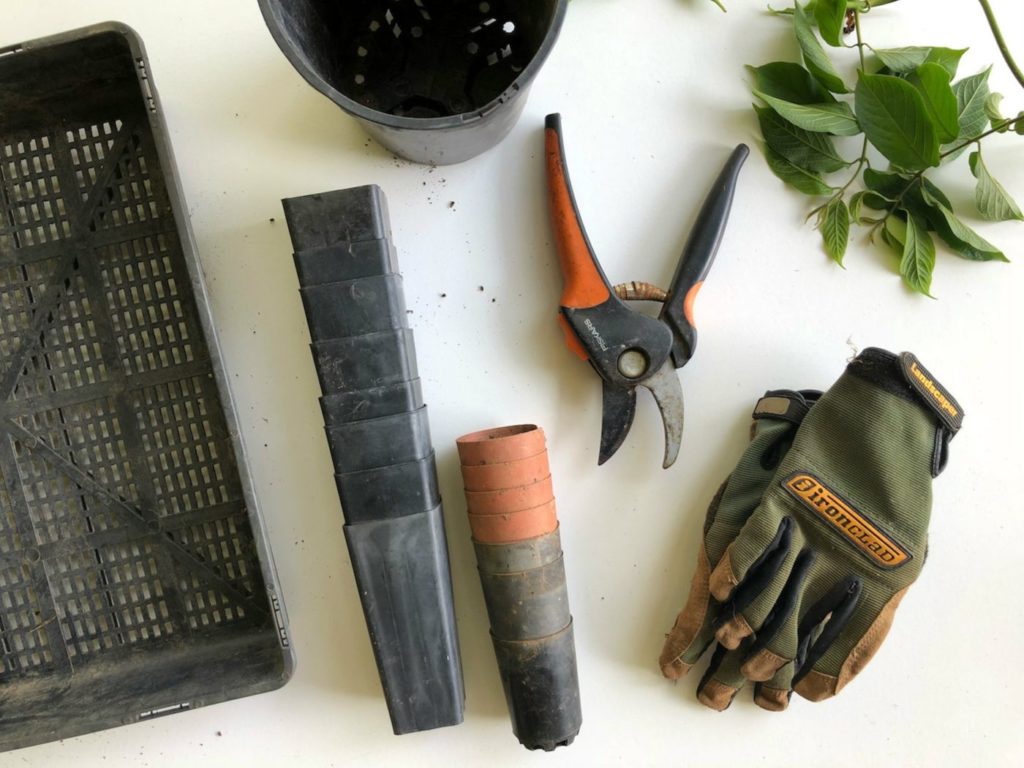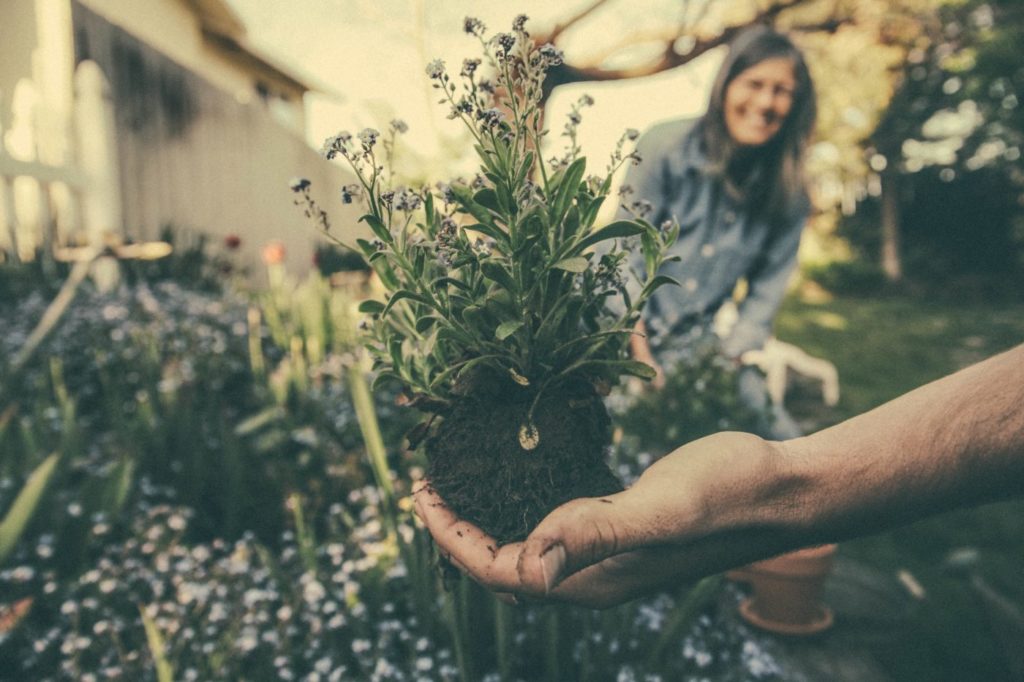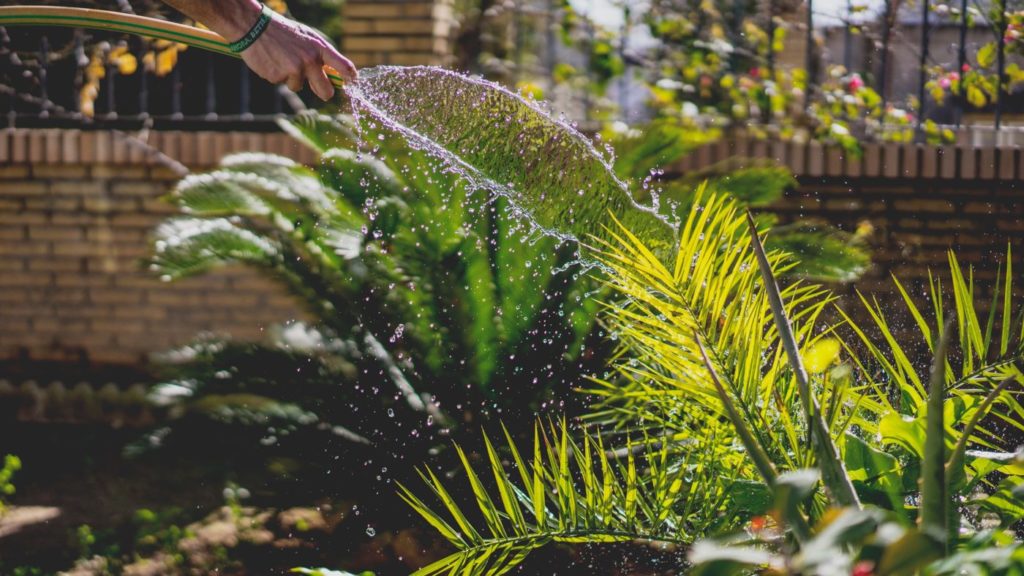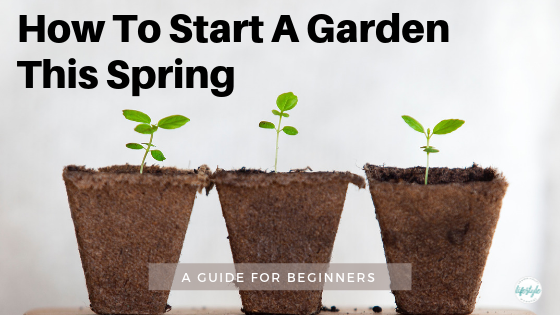Ahh Spring is finally here! The trees are starting to bloom, everything is slowly becoming green again, and the soil is thawing… which means it’s time to start gardening! If you’re new to the gardening world, fear not my friend – we’ve got you. All you have to do is follow these easy steps to grow the garden of your dreams this Spring!
Plan Your Garden and Start Small
What do you want your garden to look like? Will it be a beautiful sea of flowers, or perhaps a fruit and vegetable garden? Will the flowers be in hanging baskets and pots or will they be planted in the ground? Whatever you choose, make sure to start small and slowly create your garden oasis.

Get Basic Gardening Tools
Unless you plan on digging with your hands, you will need to get some tools to start your gardening journey. Here are some basics to consider:
Digging + Raking: In order to start your garden you will need some tools for digging and preparing the soil. You will need a spade, a trowel and a garden fork. The spade and trowel are used to dig up holes for the plants and the garden fork is perfect for breaking up bigger chunks of soil and removing any roots from old plants.
Tools for Watering: Even though the Fraser Valley is a pretty rainy place, you will still need to water your plants. For the bigger, more established plants a hose will do just fine. For any smaller plants use a watering a can. When your plants are still young you can just mist them with water from a spray bottle.
Weeding: The last thing you want is for your garden to be invaded by unwanted plants and weeds! To make the process easier, try using a forked trowel and a gardening knife to uproot any invading plants.
Pick The Right Plants
You’ve got a plan and some tools- brilliant! Now it’s time to pick the plants!
A great tip for beginners is to pick plants native to the area- they’ll be much easier to maintain and be more resilient to pests. Luckily our climate allows many varieties of plants to thrive in the Fraser Valley which means there’s plenty to choose from! For a list of some of the plants you can pick head over here.

Improve the Soil
It is never a bad a idea to add some nutrients to the soil. You can add compost into the top 8-12 inches (20-30cm) of soil with a spade or fork. The compost will be broken down over the course of a few months, so the best time to do this is in the beginning of Spring.

Plant
Alright, you’ve got your tools, your soil is prepped, and you’ve got a solid plan in place- it’s time to start planting. When working with young plants make sure you are being very gentle while taking them out of their original pots since they’re very fragile and can be easily damaged. Follow these steps to learn how to plant successfully:
- Turn the plant upside down.
- Press the underside of the pot until the plant and the soil slide out.
- Once you have freed the plant from its pot, dig a hole in your chosen plant bed deep and wide enough to hold the roots.
- Place the plant in the hole and fill it in with the soil you removed earlier.
- Do this for all of your plants and then water them thoroughly to encourage the roots to spread out.
Label and Organize
This is very often overlooked by beginners but it’s arguably one of the most important things you can do to have a successful garden. Label, your garden and organize it by keeping track of your plants and how they’re doing.
Label: Take a few minutes to make little signs you can put next to the plants to know exactly what you’re growing and where instead of relying on your memory.
Organize: Chart the progress of your garden! Keep track of how your plants are doing in all areas of your garden. Are they getting enough sunlight? Perhaps you may need to move some plants around if they’re not doing so well. It’s all important information!

Water Your Plants
When watering your plants, you’ll want to provide them with enough water to survive but not so much that the soil becomes waterlogged. The best way to do this is to water your plants slowly and allow the water to reach deep into the soil. The soil should feel moist at about 2-3 inches (5-6.5 cm) beneath the surface.
Plants at different stages of development require different amounts of water. Young plants will need to be watered daily to encourage growth and healthy roots, whereas established plants will generally only need to be watered once every 2-3 days, depending on the weather.
There you have it- 7 easy steps you can follow to create the garden of your dreams. Happy Gardening!


